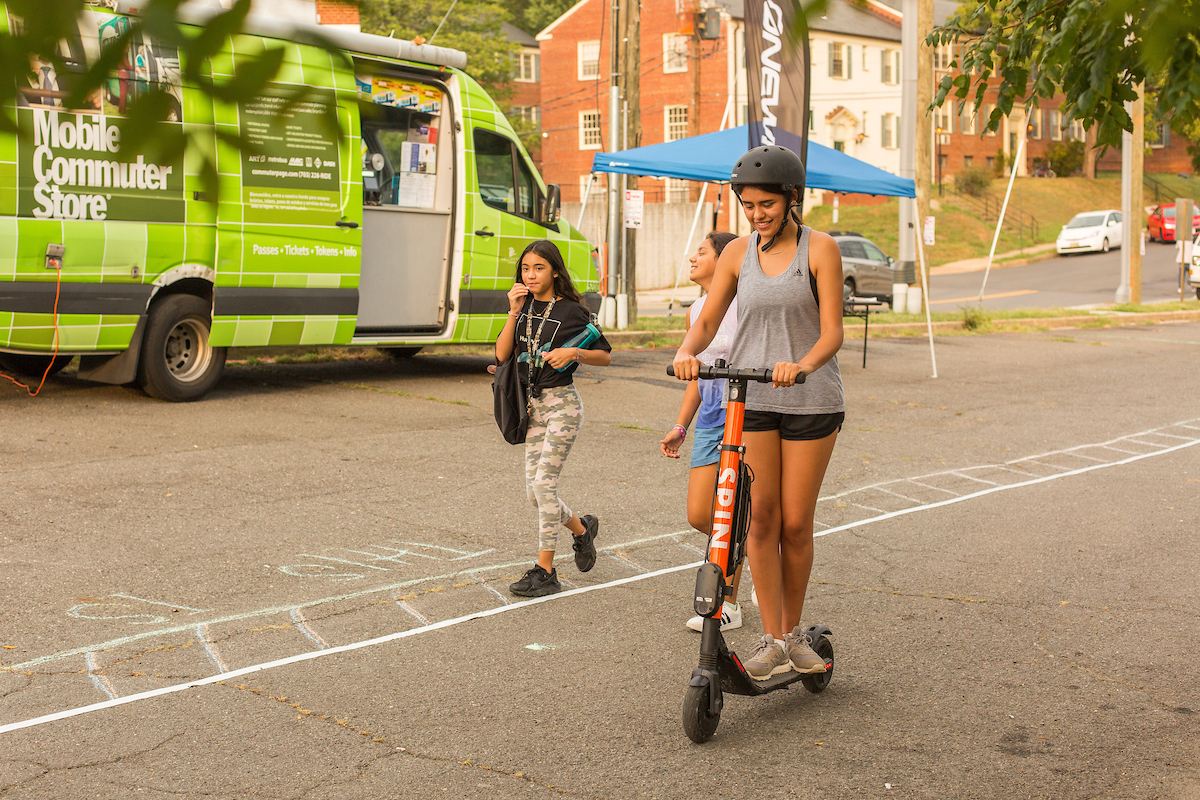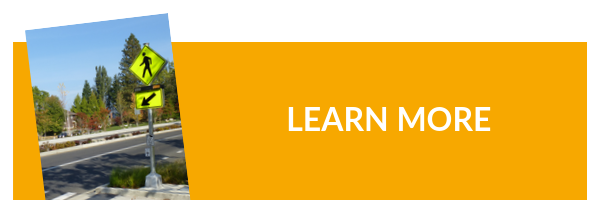Where do we all go? Musings on Arlington’s Micromobility Pilot
E-scooter riders and people walking share limited sidewalk space—but a protected, connected network of bike lanes could help. To that end, Arlington’s Pedestrian Advisory Committee wrote a letter in support of Arlington’s micromobility pilot and the Bike Element.
It’s no surprise that as the former Program Manager of WalkArlington, I consider myself first and foremost to be a pedestrian (or as I prefer to say: a person who walks). While I take Metro regularly and have been known to ride a Capital Bikeshare bike, the way I use our streets is primarily on foot.
As such, this puts me right in the heart of the supposed pedestrian vs. e-scooter rider debate. Don’t the two types of transportation conflict? Where should everyone go? Who has the right of way? Like every transportation innovation before them, e-scooters have thrown a wrench in our traditional transportation framework, and each of us have formed our own opinions about these new “micromobility” devices since they landed in Arlington over a year ago.
New Scooter Regulations
On November 16, 2019, the Arlington County Board adopted regulations for e-scooters and other shared micro-mobility devices to clarify the who, what, when, where, and how they should be used. The regulations, which went into effect on December 31, 2019, allow their use on sidewalks (with limitations), trails, and bike lanes, unless specifically signed or marked otherwise. In many ways, the devices will be treated largely like bicycles.
Like bicycles, the e-scooters are a viable transportation option for many, and we know e-scooters are being used—a lot. Between the start of the Shared Mobility Devices pilot in October 2018 through June 2019, e-scooters in Arlington County have taken more than 450,000 trips! We know that e-scooters are being used for practical trips such as connecting to Metro and running errands, and e-scooters are more likely to replace car trips (personal or ride-hailing) than public transit trips.
Sidewalks are Small and Shared
What we also know is that e-scooter riders are primarily sharing space with people who walk—on the sidewalk. Sidewalks are frequently only four to five feet wide. They sometimes have obstacles like light poles, uneven surfaces, bus stops, benches, or overhanging greenery. As a person who walks, I know that it’s tough to share that little space.
Two major issues that the shared mobility devices pilot uncovered are: how they are parked and how they are ridden. When parked incorrectly, e-scooters block the sidewalk. This may not be a problem for people who feel able and comfortable to move the devices themselves, but for a person in a wheelchair this can be a complete barrier to continuing along. When riding on the sidewalk, e-scooter riders may go at a speed much faster than most people walking, increasing the possibility for collision—particularly for older adults and children.
A Space-Based Approach
That’s why I really love how Arlington’s Pedestrian Advisory Committee (PAC) approached their recent discussion about e-scooters. They wrote a letter to the County Manager in September 2019 that made the following points:
- Micromobility devices and transportation options other than driving alone are beneficial for the County.
- Riders of e-scooters, bikes, etc. don’t have safe locations to ride—and there are concerns about sidewalk riding and incorrect parking—so building a high-quality, connected, protected bike network should be a priority.
- Rider education and some no-ride sidewalk areas (as noted in the County press release, popular spots like Rosslyn could be considered first) could help overcome lack of enforcement and technology limitations to help slow e-scooter speeds on sidewalks.
- Companies should do everything possible to increase equity of scooter availability, accommodations for those with mobility impairments, and for people who are unbanked.
- People biking, walking, and scooting are currently forced to share small sidewalks while people driving take up the vast majority of our public street space.
A Future of Better Infrastructure
The Bicycle Element of the Master Transportation Plan envisions a protected, connected network for people biking that could also be used by people scooting and riding e-bikes. Why should people who walk care about the Bicycle Element? For one, research has shown that streets with bike infrastructure make all road users (including people walking) safer. And two, better infrastructure for people biking and scooting means less sidewalk riding. The more protected bike lanes and slower-speed streets we have, the more likely it is that e-scooter riders will use those facilities (and the new regulations will prohibit riding on the sidewalk if there is a protected bike lane available). This means fewer conflicts with people walking on the sidewalk. A win-win for everyone!
The last sentence of the letter is worth quoting in full:
“Without the network in place, pedestrians, cyclists, and shared-mobility-device riders—three of the lowest impact users on the street—will be forced to continue to squabble over four to 10 feet of sidewalk space, while 15 or more yards worth of street right of way remain primarily reserved for CO2-emitting private automobiles.”
Reema Desai/ReemaDesai.com











Comments are closed here.
To prevent spam, comments will be approved before appearing on the post. If you have a comment or question, but do not want it to be published, please email WalkArlington.